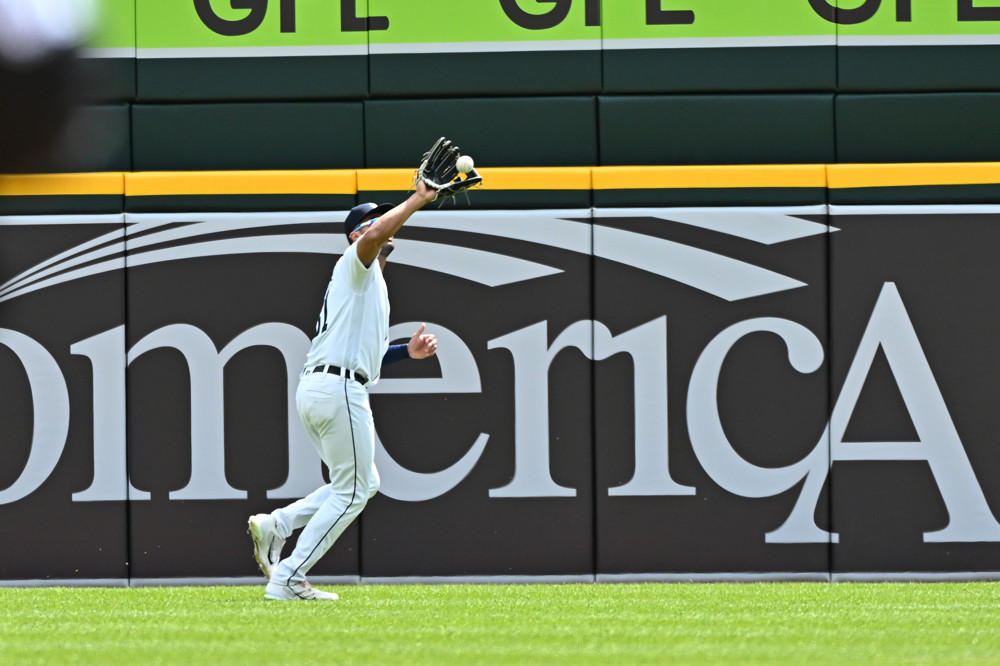If you’re not familiar with Yoshinobu Yamamoto, I can sum this up pretty quickly. He is one of the greatest pitchers of his generation and one of the best in NPB history. After seven stellar seasons and three years of utter dominance, the Orix Buffaloes are posting Yamamoto. He can sign an MLB contract this offseason.
The 25-year-old has produced an incredible three-season stretch.
| Season | IP | ERA | Strikeouts | Walks | SO/W |
| 2021 | 193 2/3 | 1.39 | 206 | 40 | 5.2 |
| 2022 | 193 | 1.68 | 205 | 42 | 4.9 |
| 2023 | 164 | 1.21 | 169 | 28 | 6.3 |
Yamamoto’s pitching earned him three consecutive Triple Crowns and Sawamura awards, NPB’s equivalent of the Cy Young Award. In his last game for Orix, Yamamoto cemented his status as an NPB legend, throwing a complete game with 14 strikeouts in Game 6 of the Japan Series. The 14 strikeouts broke a Japan Series record formerly held by Yu Darvish.
Here’s all 14 strikeouts:
Yoshinobu Yamamoto’s 14 strikeouts last night
— Yakyu Cosmopolitan (@yakyucosmo) November 4, 2023
Why is he so good?
Yamamoto blends power and command, the traits that teams look for in a starting pitcher. At 5’10” and 176 pounds, he is a smaller pitcher but has a strong frame and the ability to pitch deep into games and throw many innings without injury. He’s thrown at least 160 innings each of the last three seasons.
In Game 6 of the Japan Series, he threw 138 pitches. He’s durable and maintains velocity. His 133rd pitch was a 98-MPH fastball. He’s just as effective deep into games as he is at any other point, which is what makes him an ace.
Yoshinobu Yamamoto’s strikeout rate by times through the order this season (via @Deltagraphs)
1st: 28.0%
2nd: 24.2%
3rd: 28.6%His ability to maintain a high K rate deep into the game is a testament to his deep arsenal, stamina, and cerebral sequencing pic.twitter.com/tUtb90x4zb
— Yakyu Cosmopolitan (@yakyucosmo) November 5, 2023
Yamamoto’s sequencing, arsenal, and control, compounded by his elite command and ability to throw 4 to 5 pitches in specific quadrants in the zone make him a nightmare for hitters.
Mechanics
Yamamoto’s change to go from a held leg kick that’s done by many Japanese pitchers to an elimination of his leg kick altogether in 2023 is fascinating. He now replicates his motions from the stretch to his movements in the windup. He still gets good extension down the mound for his height and puts himself in a nice sequence to throw the ball.
Yamamoto 2022 Mechanics
Yamamoto 2023 Mechanics
The repeatability of the delivery is textbook. He had a 68.5% strike rate last season. That would have put him at 5th among qualified starters in MLB behind Joe Ryan and ahead of Spencer Strider. A clean and efficient delivery puts him in optimal fielding position. He is an excellent fielder who won the 2023 NPB Fielding Bible Award for pitchers.
The Arsenal (2023 usage and Average Velocity)
Yamamoto’s arsenal is deep and it’s electric with a pitch mix that attacks the zone more vertically, than horizontally. He fits the profile of power pitchers that teams desire. He has velocity along with a killer breaking ball and offspeed pitch; the three make him hard to hit and, with his control, he rarely gives up free passes.
Fastball 48 %, 95 mph
Yamamoto has a four-seam and two-seam fastball and will sprinkle in the two-seam on the hands of righties or he will occasionally front-hip the pitch to lefties. The main attraction is his four-seam.
Yamamoto averaged just under 95 mph on his fastballs this season but his four-seamer plays up in the zone with good carry. A lower release point due to his height and 3/4 arm slot make it a unique pitch that explodes at the top of the zone.
Yamamoto’s average release height is around 5.5 feet putting him in elite company in terms of that metric. With 17 inches on average of induced vertical break (IVB), he’s able to carry the ball through the top of the zone with ease.
Yamamoto doesn’t always live at the top of the zone even though his fastball tunnels with his curveball nicely. He opts to tunnel the pitch with his splitter more but his command of the pitch in all four quadrants is what makes him special. Yamamoto can spot his fastball where he wants it and it sets up the rest of his devastating arsenal.
Curveball 16%, 77 mph
Yamamoto’s curve is one of the prettiest in the world. It drops out of the sky for strikes but also generates plenty of whiffs. He also can get chases by throwing curves below the zone, or he can steal strikes late and early in the count.
Throwing with a Ginoza grip as he shows the back of his hand towards the plate, he then pushes or flicks the ball with his thumb, which is what gives the pitch such high spin. It averages 77 mph and he’s also able to take some off or throw it harder when need be.
I love this overlay from Pitching Ninja that illustrates how good the pitch is:
Yoshinobu Yamamoto, Fastball & Curveball, Overlay.
Also see his unique curveball release.
One of the prettiest RHP curveballs in the world!Yamamoto: 16-5, 1.42 ERA (170 innings) and has won his last 13 decisions.
Leads NPB in nearly every major pitching category. pic.twitter.com/GgeQul7q27— Rob Friedman (@PitchingNinja) October 2, 2021
Splitter 26% 90 mph
Yamamoto’s splitter is effective against left-handers with a .178 opponents’ OBP and a .424 OPS. The crazy thing is against right-handed batters it performs even better, a .106 OBA and a .324 OPS. The splitter is his go-to strikeout pitch and is nightmare fuel for batters.
Also like much of the rest of his arsenal, he’s able to manipulate the speed and shape. Yamamoto can create more backspin and higher velocity when needed or can take some off and kill spin depending on the situation.
This was never more evident than in a game in 2022 when he threw a two-seamer and a splitter at the same speed in back-to-back pitches. The pitch averages 90 MPH but he has been able to throw the pitch from 82 mph up to 93 mph. He has the feel to “gas pedal” all his pitches at any time. This messes with the hitter’s timing and rhythm as well as their ability to sit on specific pitches.
If the pitch is put in play he keeps it on the ground. The splitter has a 77% ground ball rate. Couple that with a 60% groundball rate for his curve and you can see that it was difficult for hitters to get his secondaries into the air. His groundball rates should take a dip in MLB with the types of hitters he faces. Remember too that his current numbers may be distorted because NPB is currently in a “dead ball era” but a better positioning of fielders in MLB can also help him out.
The splitter is a weapon for him against both righties and lefties and with its darting and diving action, he’s able to generate whiffs and chases with a 40% whiff rate each of the last two seasons. The pitch has late action and ducks underneath barrels consistently.
Here’s Yamamoto’s split that looks like a wiffle ball as it takes off from the batter:
Slider and Cutter (SL) 2% 85 mph / (CUT) 8% 92 mph
To round out his arsenal we can look at both his cutter and slider together. The slider, rarely thrown, is more of a sweeper. The cutter was thrown more to RHBs than LHBs but he does throw the pitch in on the hands of lefties. With a .366 opponents’ OBP and an OPS of .825, it was by far his worst-performing pitch.
The issue is sometimes the cutter will occasionally leak to his arm side, but he’s still very comfortable spotting the pitch where he wants it and has no lack of confidence in throwing it. Here’s a front-hip cutter to a RHB that’s perfectly painted on the inside getting an emergency hack:
The slider is rarely thrown, less than two percent of the time. He still spots the pitch very well and it has a good sweep to it.
It’s a very projectable pitch for him and he has the feel to throw it. He just never had to in NPB because of his three best pitches and because he was facing more left-handed hitters. He might never throw it more in MLB but it could play as a real weapon against MLB hitters, especially right-handed hitters.
What to Expect
As Yamamoto transitions to facing MLB hitters, he might opt for more high four-seams and more reliance on his curveball as a change of pace early. The MLB ball is slightly bigger and less tacky than its NPB counterpart, and we could see his usage possibly change by adding in more cutters and sliders while he adapts his splitter. However, it is worth mentioning that he threw an MLB ball in the World Baseball Classic this spring with minimal issues.
With three double-plus offerings and elite command of all his pitches, Yamamoto has the chance to be a Top 10 or Top 5 pitcher in MLB next season. There are always questions about the transition from NPB to MLB, but Yamamoto is the most polished pitcher to make this transition.


